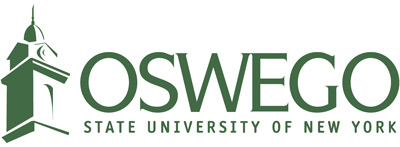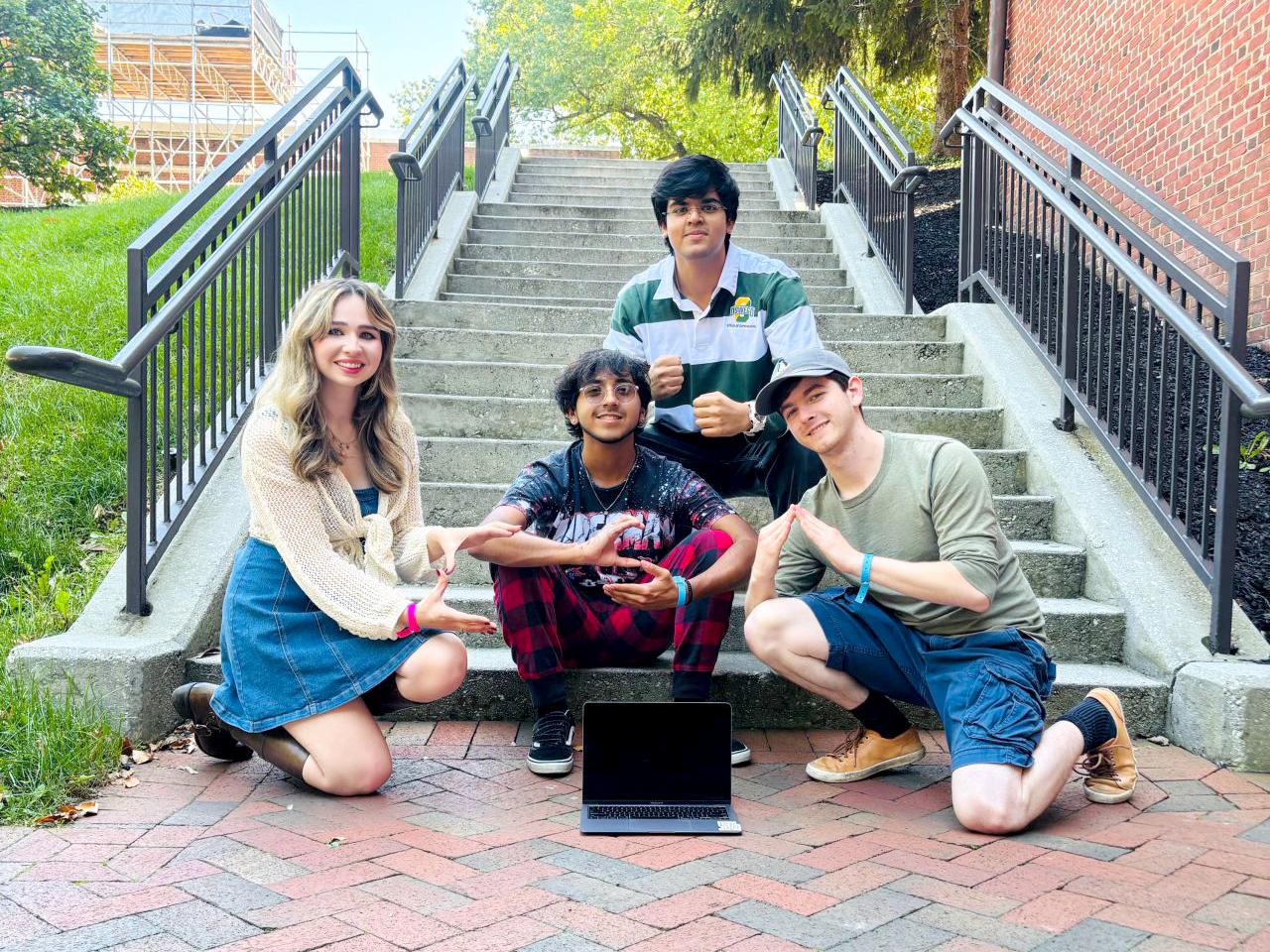Pausing during their visit for the Johns Hopkins HopHacks competition are LakerHacks team members, from left, Samantha Brown, Joseph Vega, Aditya Raj Singh and Landon Rusco.
With recent top finishes at Johns Hopkins and Cornell University hackathons this fall already, SUNY Oswego’s LakerHacks team kicked off the semester with notable achievements added to their record.
On Sept. 12 to 14, a four-person team of computer science and software engineering students traveled to Johns Hopkins University to compete in HopHacks, one of the northeast’s most competitive hackathons. The participants are members of the Computer Science Association and Human-Computer Interaction Organization.
Over the course of 36 hours, students Samantha Brown, Landon Rusco, Joseph Vega and Aditya Singh built a rhythm-based boxing game that used machine learning and webcam motion tracking to register player movements.
The project — titled “Beat Boxing” — blended fitness mechanics with a musical game environment, standing out among more than a dozen competing schools and earned Oswego third place overall and in the Data and Gaming track.
“It was exhilarating,” said Rusco, who also is president of the Computer Science Association. “We didn’t think we had a chance against schools like MIT or Columbia, but the idea carried us through. Once judges started coming back to our table, we realized people were genuinely excited about what we built.”
Brown, director of LakerHacks and a double major in computer science and interaction design, said the experience was especially rewarding given the obstacles the team faced. Technical challenges included implementing real-time multiplayer and troubleshooting OpenCV motion tracking.
“It was stressful, but it showed us the value of teamwork under pressure,” said Brown. “Even our first-year teammate, who had little programming experience, left inspired to keep pursuing hackathons.”
Less than a week later, Brown attended Cornell University’s hackathon, BigRed//Hacks, this time joining a team of students she had met the first day of the competition. Inspired by the event’s theme of music and entertainment, she designed “Bear Escape,” a 3D browser-based rhythm game that allowed users to upload songs, generate playable tracks with AI and perform with either a keyboard or “Guitar Hero” controller.
The project won two major categories: Best Use of Gemini API (sponsored by Major League Hacking) and Cornell’s Best Design award.
“That win meant a lot to me,” said Brown. “It was proof that my art and design skills can make a real impact in computer science projects. The balance is what made our work stand out.”
Successful launch
LakerHacks, founded last semester, has quickly become a focal point for student innovation in Oswego. Last spring, the group hosted its first annual 24-hour hackathon, drawing a total of 75 participants. Plans are already in motion to bring the event back in the spring — slated for April 11, 2026 — with the goal of joining the Major League Hacking circuit.
“That would connect us to national sponsors like Google and MongoDB and help us attract students from other universities,” Brown said.
Brown hopes to carry that same energy beyond Oswego after she graduates this December. She is currently in the process of applying to be a coach with Major League Hacking, a role that would allow her to mentor students looking to participate in hackathons across the country.
For Rusco, the group’s recent recognition also motivates the group’s overall mission on campus. “Hackathons are about more than coding,” he said. “They build teamwork, communication and confidence. We want Oswego students to know these opportunities are for them too.”
LakerHacks will be making its next appearance at HackPrinceton in November, where members hope to continue building SUNY Oswego’s reputation in the hacking world.
“This has only been the beginning,” Brown said. “Winning is exciting, but what matters most is creating projects that are fun, inspiring and bring people together.”
-- Written by Emma Kerl of the Class of 2026




